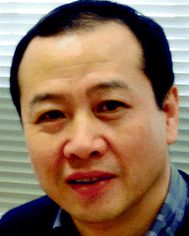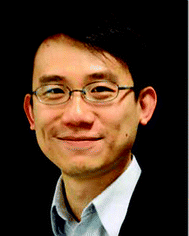Optofluidics 2013
Ai-Qun Liua and Changhuei Yang*b
aSchool of Electrical & Electronic Engineering, Nanyang Technological University, Singapore
bDepartment of Electrical Engineering, California Institute of Technology, MC 136-93, 1200 E. California Blvd, Pasadena, CA 91125, USA
Abstract
Optofluidics is broadly defined as the fusion of optics and microfluidics. The term optofluidics was coined less than a decade ago. Yet, the term and the concept it encapsulates have pervaded through a significant fraction of the miniature system research community. Optofluidic research continues to grow in unanticipated directions. The Second International Conference on Optofluidics (Optofluidics-2012) showcased some of these developments. The conference was first organized by Xi'an Jiaotong University in 2011 and then Suzhou University, Institute of Nanotechnology, Xi’an Jiaotong University and Suzhou Industrial Park where it was proudly hosted as a summit conference of the CHInano conference in Suzhou on 13–15 Sep 2012. We are happy that Lab on a Chip, a major publication venue for optofluidic research has scheduled this themed issue.
 Ai-Qun Liu | Dr Ai-Qun Liu is currently Professor at the School of Electrical & Electronic Engineering, Nanyang Technological University, Singapore. He serves as editor and editorial board member of more than 10 scientific journals. He is the author or co-author of over 200 publications and peer-reviewed journal papers, and the author of two books. He won the Institute of Engineering Singapore (IES) Award in 2006 and the University Scholar award in 2007. He specializes in the research fields of MEMS and optofluidics. |
 Changhuei Yang | Dr Changhuei Yang is a Professor of Electrical Engineering and Bioengineering at the California Institute of Technology. He conducts research in the area of chip-scale microscopes, optofluidics and time-reversal optical methods for deep tissue imaging. He has received the NSF Career Award, the Coulter Foundation Early Career Phase I and II Awards, and the NIH Director's New Innovator Award. |
This special issue contains a number of interesting papers in the field of optofluidics. The projects reported span from very new and exciting optofluidic innovations to mature applications of optofluidic techniques.
The optical geometry reported in DOI: 10.1039/c3lc50157d for use in simultaneous absorption and refractive index measurement is remarkably novel and sensible. As a solution to the common optical measurement task, it is highly amenable to incorporation into micro-analysis systems.
The approach of a highly targeted coating of phospholipid ink on a whispering-gallery microlaser (DOI: 10.1039/c3lc50149c) is an interesting technical development that is likely to be broadly adopted for related work as it minimizes on valuable reagent use.
The novel optofluidic switch described in DOI: 10.1039/c3lc50204j is schematically simple and elegant. The application articulated in the paper also pushes optofluidics in an unanticipated direction – renewable energy application. Last year's special issue featured a paper (DOI: 10.1039/c2lc40490g) on applying optofluidics to address biofuel production. This current paper shows that optofluidics can address renewable energy challenges from more than one angle.
We would also like to draw attention to a very interesting paper (DOI: 10.1039/c3lc50207d) where the authors report on the use of FRET and optofluidic lasers to measure very subtle protein–protein interactions.
The paper-based dengue fever diagnostic device reported in DOI: 10.1039/c3lc50135c is an excellent example of an application project. The concept of using paper as a suitable and highly consistent fluidic processing medium that allows for simple optical analysis is only a few years old. Lo et al. developed an important application that optimally capitalizes on the cost and consistent quality of this approach to address the strong needs of developing countries.
All of the papers in this special issue were refereed according to the usual Lab on a Chip standards, with Ai-Qun Liu and Changhuei Yang serving as editors. The Third International Conference on Optofluidics will be held on 15–17 August, 2013 in Hong Kong and more details can be found from http://www.optofluidics.cn/.
| This journal is © The Royal Society of Chemistry 2013 |
